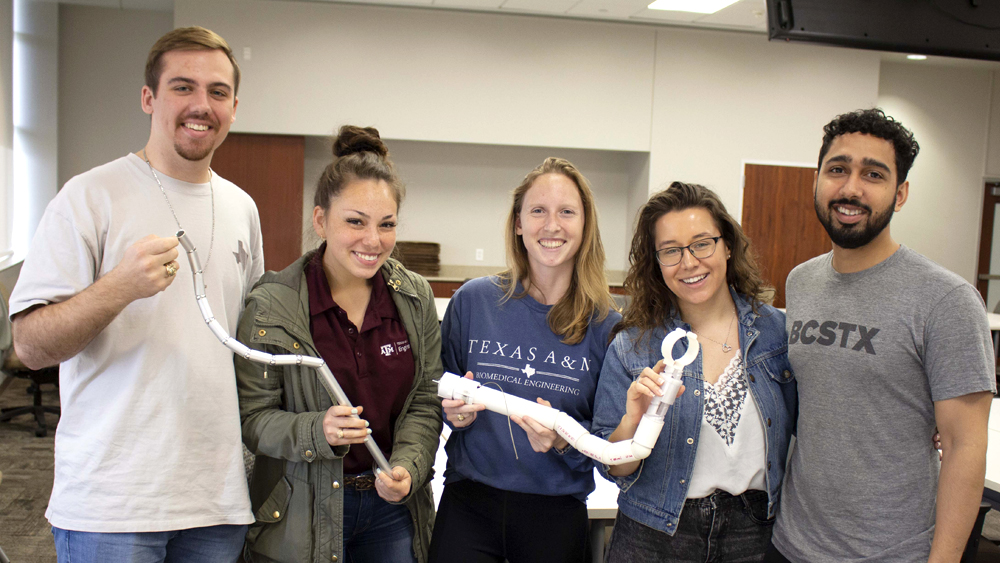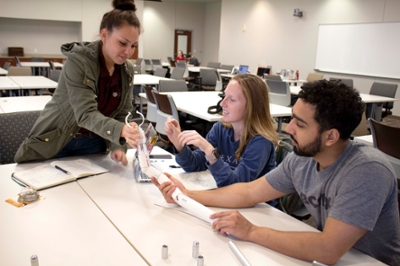
Sponsor: Dr. Deepak Mehta, pediatric ear, nose and throat surgeon with Texas Children’s Hospital in Houston
Project need: During procedures, a surgeon will use an endoscope to get better views of the surgery site. Currently, the surgeon or a technician will hold it, taking away a set of hands from the surgery itself. A capstone team of five worked to develop a holder that can keep the endoscope absolutely still during the process.
The team took Mehta’s big ideas and developed them into a tangible engineering concept and design. Translating the doctor’s needs into engineering concepts was an interesting challenge, said Madeline Franke.
“It was really cool to speak both ‘languages,’” said Franke, who plans to go to medical school after graduation. “I feel like I’m really prepared to be able to work with engineers and to have that more technical mindset and know what things are possible and what things are just asking too much. As a doctor, I want to speak to engineers with the knowledge of what they can do and what’s possible.”

Solution: The final product was an aluminum arm that can clamp and lock to both the surgery table and the endoscope, with a ball and joint arm that can move easily to help the surgeon get the scope where they need it.
“The nurses or technicians can set it up and the doctor can come in and immediately start using it,” Vaid said. “Sterilization will be easier as well because we’ve designed it so it won’t need to be (steam sterilized).”
Camille Felgenhauer said she has new respect for the smaller details of a larger project after months of work.
“This project is on the smaller scale since we are just catering to our surgeon, but the bigger impact of this is it’s going to cut down on procedures and it’s going to allow him to work on more patients at the end of the day and help those kids that need it,” Felgenhauer said. “It’s those small details that make the bigger picture worth it.”

Challenges: The prototype holder had to be not only easy to use but also accessible within a hospital’s budget. Bailyn Piecewicz said she prefers the two-semester project to previous shorter timelines to have time to work through those challenges.
“You get to know each other and your strengths and weaknesses more and then you know how to delegate the tasks more efficiently,” she said. “Plus, because you have a longer period to work on the project, you get to see it develop more. The end product is hopefully a lot better than if it was in a shorter time frame.”
Broader impact for students: Quentin Bartkowiak, who is pursuing employment in industry, said working in a productive team dynamic has prepared him for team environments in the future.
“We’ve learned how to be more efficient and how to use each other for their skills and what each other brings specifically to the team,” Bartkowiak said. “Working as a team, it will help me grow in my work experience and my career just by learning to work with people, whether we have a great team like this or teams that aren’t so functional.”